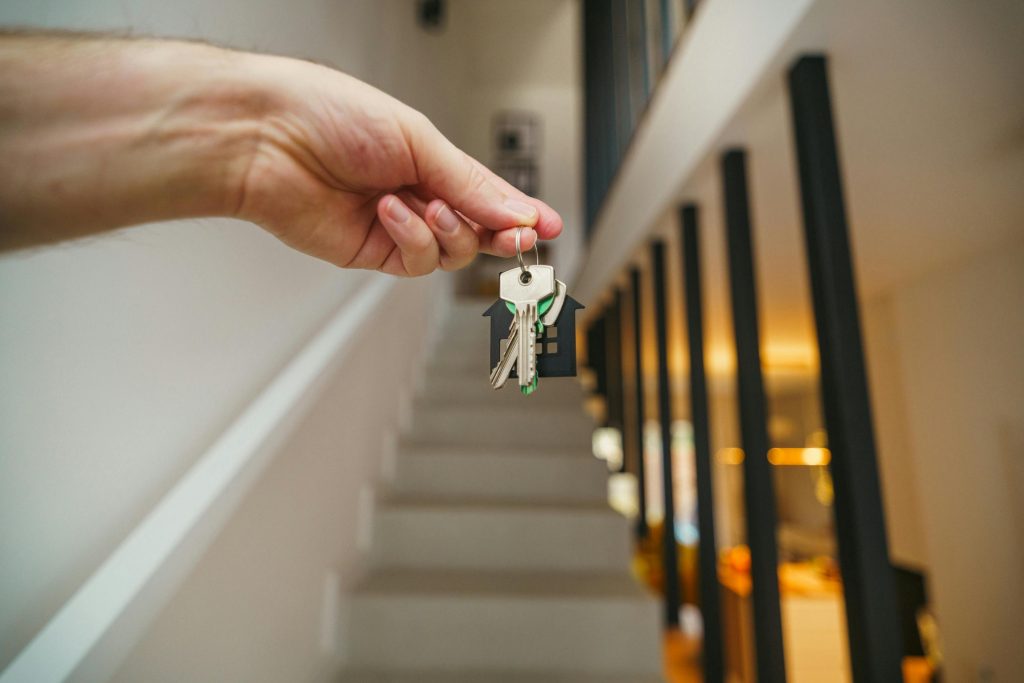Introduction
Being a landlord can be rewarding, but it comes with a constant reality: unexpected expenses happen. From emergency plumbing leaks to prolonged vacancies or sudden roof replacements, landlords who fail to prepare financially often find themselves scrambling—or worse, dipping into personal funds to keep their properties afloat. That’s where contingency reserves come in.
A contingency reserve is essentially a safety net—a pool of funds landlords set aside to cover unforeseen property-related costs. But how much should landlords maintain in 2025, and what factors determine the right reserve amount? In this article, we’ll explore the mechanics of contingency reserves, practical calculation methods, industry benchmarks, and best practices to help landlords stay financially resilient.
1. Understanding Contingency Reserves for Landlords
1.1 What Is a Contingency Reserve?
A contingency reserve is a dedicated financial buffer that landlords set aside to deal with unpredictable events related to property ownership and management. It’s not the same as operating expenses—it’s for:

- Emergency repairs.
- Vacancy losses.
- Legal disputes.
- Insurance deductibles.
1.2 Why They Matter
- Protect cash flow: Keeps landlords from falling behind on mortgages during unexpected vacancies.
- Preserve property value: Ensures timely repairs and maintenance.
- Reduce stress: Provides financial security when surprises arise.
- Meet lender expectations: Many mortgage lenders require landlords to maintain reserve funds.
2. Key Expense Categories Covered by Reserves
2.1 Emergency Repairs
- Plumbing leaks and burst pipes.
- HVAC breakdowns.
- Electrical failures.
2.2 Major Capital Expenditures (CapEx)
- Roof replacements.
- Window upgrades.
- Appliance replacements.
- Exterior painting or siding renewal.
2.3 Vacancy and Turnover Costs
- Lost rental income during tenant transitions.
- Cleaning, painting, and repairs after move-out.
- Marketing and leasing agent fees.
2.4 Legal and Compliance Issues
- Eviction-related costs.
- Unexpected legal disputes with tenants.
- Compliance upgrades (e.g., new fire safety regulations).
2.5 Insurance Deductibles and Gaps
- Deductibles on landlord insurance policies.
- Costs not fully covered by policies (flood damage, mold remediation).
3. How Much Should Landlords Keep in Reserves?
There’s no one-size-fits-all answer. The right reserve depends on property type, age, location, and risk exposure.
3.1 The Percentage-of-Income Method
Set aside a percentage of gross rental income:
- 5–10% for single-family rentals.
- 10–15% for multifamily units or commercial properties.
Example: A duplex generating $2,000/month ($24,000/year) → Reserve 10% = $2,400 annually.
3.2 The “Rule of Thumb” Per Unit
- $250–$500 per unit annually for newer properties.
- $500–$1,000 per unit annually for older properties.
3.3 Replacement Reserve Formula (CapEx Focused)
Add up major systems (roof, HVAC, appliances), estimate remaining useful life, and divide costs across years.
- Example: $12,000 roof with 12 years of life → $1,000 annually reserved.
3.4 Vacancy Coverage Rule
Maintain at least one to three months’ worth of rent per unit to cover potential vacancies.
3.5 Hybrid Approach (Best Practice)
- Reserve a percentage of income (for small repairs).
- Add sinking funds for big-ticket items.
- Keep a vacancy buffer separately.
4. Factors That Influence Reserve Levels
4.1 Age of Property
- New builds may only require 5% of income.
- Older properties may need 15–20% due to more frequent repairs.
4.2 Property Type
- Single-family homes: Higher vacancy risk, lower shared costs.
- Multifamily units: Shared maintenance but higher system costs (boilers, elevators).
- Commercial: Tenant improvements and specialized systems increase costs.
4.3 Location and Market Conditions
- Harsh climates = higher HVAC and roofing costs.
- Rent-controlled areas = longer turnover periods.
- Areas with strict regulations = higher compliance risk.
4.4 Tenant Profile
- Long-term, stable tenants reduce turnover risk.
- Student housing or short-term rentals require higher reserves due to wear and tear.
4.5 Landlord’s Risk Appetite
Conservative landlords may keep larger reserves for peace of mind, while risk-tolerant landlords may maintain minimal reserves but rely heavily on insurance.
5. Challenges Landlords Face in Setting Reserves
5.1 Underestimating Costs
Many landlords underestimate long-term CapEx, like roofs or HVAC systems, focusing only on day-to-day repairs.
5.2 Cash Flow Constraints
Small landlords with one or two units may struggle to set aside significant reserves without raising rents.
5.3 Inflation and Supply Chain Volatility
Rising costs of materials and labor can make old reserve calculations obsolete.
5.4 Over-Reliance on Insurance
Landlords sometimes assume insurance will cover everything, but deductibles and exclusions often leave gaps.
5.5 Psychological Biases
- Optimism bias: Believing “nothing major will happen.”
- Procrastination: Delaying reserve funding until after an emergency hits.

6. Tools and Strategies to Manage Contingency Reserves
6.1 Separate Reserve Accounts
Keep reserve funds in a dedicated high-yield savings account to prevent accidental spending.
6.2 Automated Contributions
Set up monthly transfers (e.g., 10% of rental income) into reserve accounts.
6.3 Use of Spreadsheets or Property Management Software
Track:
- Contributions.
- Withdrawals.
- Remaining balances.
6.4 Integration with Capital Improvement Plans
Align reserve contributions with long-term property plans (renovations, upgrades).
6.5 Layering Insurance and Reserves
- Use reserves for deductibles and non-covered costs.
- Let insurance cover catastrophic events.
7. Best Practices from Experienced Landlords
- Start early: Even small contributions build over time.
- Reevaluate annually: Adjust reserves based on property age and market changes.
- Overestimate, don’t underestimate: Better to have too much set aside than too little.
- Document withdrawals: Treat reserve usage like a formal transaction, not petty cash.
- Link to rent growth: As rents increase, so should reserve contributions.
8. Real-World Case Studies
8.1 Single-Family Rental Landlord
A landlord in Florida owned three single-family rental homes. Initially, they kept only one month’s rent per property in reserves. When a hurricane damaged roofs and fences, repair costs exceeded $20,000. The landlord had to borrow at high interest to cover expenses.
Lesson: In regions with natural disaster risks, one month’s rent is insufficient. Experts recommend at least 3–6 months’ rent per property plus additional CapEx reserves.
8.2 Multifamily Apartment Owner
An owner of a 20-unit building in Chicago allocated $500 per unit annually into reserves. After ten years, they had $100,000 set aside. When the building’s boiler system failed, replacement costs of $85,000 were fully covered without debt.
Lesson: Systematic per-unit reserve contributions allow landlords to handle major capital expenditures without disrupting operations.
8.3 Short-Term Rental Host
An Airbnb operator underestimated turnover costs. Frequent cleaning, minor repairs, and guest-related damages cut into profits. By implementing a 10% gross income reserve policy, the host stabilized cash flow and could fund ongoing replacements of linens, appliances, and furniture.
Lesson: Short-term rentals require higher reserve percentages due to wear-and-tear intensity.
9. Lender and Regulatory Perspectives
9.1 Mortgage Lenders
Many lenders require landlords to demonstrate reserves before approving investment property loans. Typical requirements:
- 2–6 months of mortgage payments in liquid reserves.
- Higher requirements for multifamily or riskier property types.
9.2 Regulatory Expectations
- In some jurisdictions, housing authorities mandate reserve levels for subsidized housing.
- Commercial landlords may be contractually obligated to maintain replacement reserves for common area maintenance.
9.3 Insurance Companies
Insurers may ask for proof of reserve funds as part of underwriting, especially in disaster-prone areas. Reserves signal financial resilience and reduce claim risks.
10. Emerging Trends in Reserve Management (2025 and Beyond)
10.1 AI-Powered Expense Forecasting
Landlords increasingly use property management software with AI features to:
- Predict repair timelines.
- Suggest reserve contributions.
- Model “what-if” scenarios (e.g., roof replacement vs. refinance).
10.2 Digital Reserve Accounts
Banks and fintech companies now offer specialized landlord reserve accounts:
- Automated contributions from rental income.
- Segregated sub-accounts for CapEx, vacancies, and emergencies.
- Interest-bearing features to grow unused reserves.
10.3 ESG and Sustainability Considerations
Sustainable upgrades (solar panels, energy-efficient windows) are entering reserve planning. Though expensive upfront, they reduce long-term operating costs and may qualify for tax incentives.
10.4 Community and Syndicated Reserves
In multi-owner buildings or real estate syndications, pooled reserves are increasingly common. These reduce individual risk but require clear governance.
11. Sustainability and Reserves
11.1 Green Budgeting
Forward-thinking landlords allocate reserves for:
- Energy retrofits.
- Smart thermostats and IoT devices to reduce utility costs.
- Sustainable landscaping to lower water bills.
11.2 Long-Term Value
Properties with sustainable upgrades command higher rents and resale values. Landlords treating reserves as an investment in sustainability often see returns beyond cost savings.
12. Future Predictions
12.1 Standardization of Reserve Ratios
By 2030, expect clearer industry benchmarks:
- 10% of rental income for small landlords.
- $500–$1,000 per unit annually for multifamily.
- 6–12 months of operating expenses for commercial properties.
12.2 Integration with Smart Property Tech
IoT sensors will trigger reserve recommendations automatically when systems show early signs of failure.
12.3 Expansion of Regulatory Oversight
Governments may standardize landlord reserves to ensure tenant safety and housing stability, especially in rent-controlled or subsidized housing sectors.
13. Actionable Steps for Landlords
- Assess your property type: Single-family vs. multifamily vs. commercial.
- Calculate reserves using a hybrid method: Combine % of income, per-unit formulas, and sinking funds for big-ticket items.
- Segregate reserves: Separate accounts for CapEx, vacancies, and emergencies.
- Review annually: Adjust reserves for inflation, property age, and market shifts.
- Leverage technology: Use property management software or fintech accounts for transparency.
- Think long-term: Align reserves with sustainability upgrades and value creation.
Conclusion
Contingency reserves are the financial lifeline of landlords. They protect cash flow, preserve property value, and provide peace of mind in an unpredictable market. While there’s no universal number, the right reserve strategy blends income-based contributions, per-unit formulas, vacancy buffers, and sinking funds for CapEx.

In 2025, technology, lender requirements, and sustainability goals are reshaping how landlords approach reserve planning. The landlords who thrive will be those who view contingency reserves not just as an emergency fund—but as a strategic tool for long-term success and property growth.
FAQs
1. How much should landlords keep in contingency reserves?
A common rule is 5–15% of rental income annually or $500–$1,000 per unit, plus 1–3 months’ rent for vacancy coverage.
2. Do lenders require reserve funds?
Yes. Most lenders require 2–6 months of mortgage payments in reserves, with higher requirements for multifamily properties.
3. Should reserves cover both repairs and vacancies?
Ideally, yes. Smart landlords separate reserves into emergency repairs, CapEx funds, and vacancy buffers.
4. Are reserves tax-deductible?
No. Contributions to reserves are not deductible, but the actual expenses paid from reserves (repairs, maintenance) are usually deductible.
5. How often should reserves be reviewed?
At least annually, and more frequently if property conditions, market rents, or regulations change.
6. What happens if landlords don’t maintain adequate reserves?
They risk cash flow crises, delayed repairs, unhappy tenants, potential fines, and strained lender relationships.

